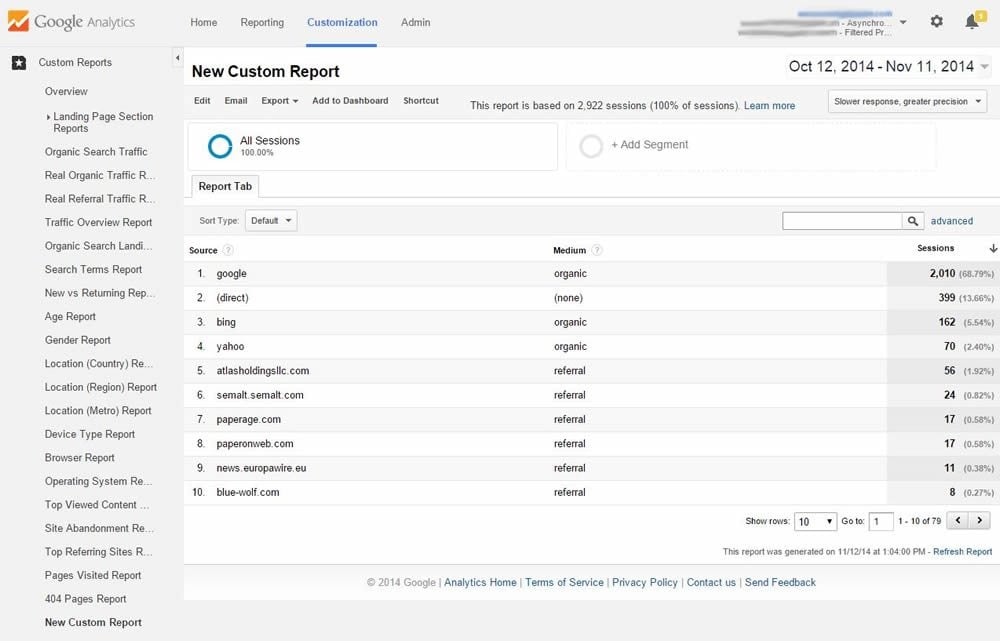Understanding Secondary Dimension in Google Analytics: A Complete Guide
Wiki Article
Unlock Deeper Insights With Secondary Measurement in Google Analytics
With the substantial stretch of information offered in Google Analytics, the application of secondary measurements can substantially enhance your analytical capacities. These extra layers of data offer a nuanced viewpoint that can brighten detailed details within your key metrics. By tactically including second dimensions into your analysis, you can uncover useful understandings that might otherwise remain obscure. The capacity to analyze and divide user habits with greater precision opens a world of opportunities for improving and enhancing approaches performance.Understanding Primary Vs. Additional Measurements
When analyzing data in Google Analytics, it is vital to distinguish in between secondary and primary dimensions to get deeper understandings right into customer actions. Primary dimensions are the major classifications through which you can watch your information, such as source/medium, landing, or device web page. These dimensions provide the basic framework for arranging and understanding your information. On the various other hand, additional measurements allow you to additional dissect your key measurement data. By including a second measurement, you can layer on additional information to your key dimension, allowing an extra granular evaluation. If your main measurement is the source/medium with which customers arrived on your website, adding a secondary dimension like geographic location can disclose where those individuals are located geographically. When looking at the primary measurement alone, this included layer of info can assist you determine fads, patterns, or anomalies that might not have actually been noticeable. As a result, leveraging both additional and main measurements in Google Analytics is critical for extensive data analysis and educated decision-making.Using Additional Dimensions Properly
By including secondary dimensions together with primary dimensions, online marketers and analysts can dive deeper into the specifics of user communications on their websites. Secondary measurements enable users to sector and filter main measurement data better, providing a more comprehensive view of individual interactions, actions, and demographics.Additionally, additional measurements enable individuals to contrast and contrast different information factors within a single record, helping with a more extensive analysis of individual actions patterns. By leveraging secondary dimensions successfully, organizations can reveal concealed understandings, optimize their advertising methods, and enhance the total user experience on their internet sites.
Checking Out Usual Additional Dimension Mixes
To further assess customer habits and fads in Google Analytics, it is useful to check out typical mixes of additional dimensions. Some usual secondary measurement mixes that provide useful insights include evaluating website traffic sources with customer locations to understand where web site site visitors are coming from geographically and just how they found the site. Checking out user behavior metrics with additional measurements such as interests or demographics can aid in targeting details audience sections much more effectively.Applying Second Dimension in Custom-made News
Utilizing second dimensions in personalized reports permits a much more comprehensive analysis of data in Google Analytics, improving the deepness of understandings gotten. When creating personalized reports in Google Analytics, including second measurements can give a more comprehensive sight of just how different dimensions engage with each various other. This attribute makes it possible for users to dig deeper right into their data and uncover valuable connections that may not be immediately obvious.By applying second measurements in custom reports, individuals can obtain a better understanding of their internet site or app traffic. Combining the key dimension of "source/medium" with the second dimension of "touchdown page" can expose which touchdown web pages are more executing finest for web traffic coming from particular sources. This understanding can help online marketers enhance their campaigns and enhance general conversion rates.

Enhancing Information Visualization With Secondary Dimension
When exploring data in Google Analytics custom-made reports, integrating second measurements not just gives a much more detailed analysis but additionally boosts the aesthetic representation of insights via information visualization. By including a secondary measurement to your reports, you can enhance the way information is presented, making it much easier to identify patterns, patterns, and relationships within your website's performance metrics.Additional measurements can aid you segment your information additionally, allowing right here for a much deeper understanding of individual habits and interactions on your website. This improved level of granularity can be especially useful when attempting to separate details variables that might influence your website's performance - Secondary Dimension in Google Analytics.

Conclusion
Finally, leveraging secondary dimensions in Google Analytics enables a more thorough analysis of information, bring about much deeper insights and even more educated decision-making. Secondary Dimension in Google Analytics. By including additional layers of information to primary data collections, marketing professionals and analysts can uncover surprise patterns, patterns, and relationships that supply a granular view of customer habits and interactions. This enhanced degree of insight allows optimization of campaigns and customized approaches for certain target market sections, eventually improving performance and conversion pricesOn the other hand, secondary measurements enable you to additional dissect your main dimension data. By adding a secondary measurement, you can layer on additional info to your key dimension, allowing a more granular analysis. If your main dimension is the source/medium with which customers got here on your website, adding a second dimension like geographical place can disclose where those customers are situated geographically. By including secondary dimensions together with key measurements, marketing professionals and experts can dive deeper into the specifics of individual communications on their internet sites. Second more helpful hints dimensions permit customers to sector and filter key measurement information better, offering a more comprehensive sight of customer habits, demographics, and interactions.
Report this wiki page